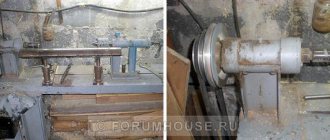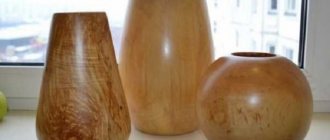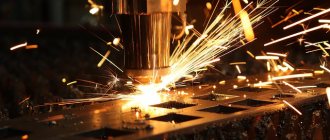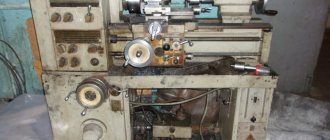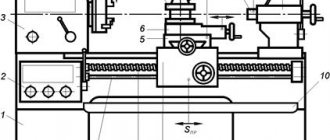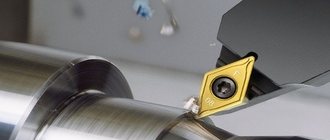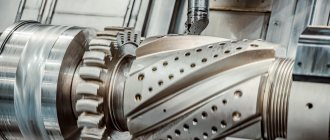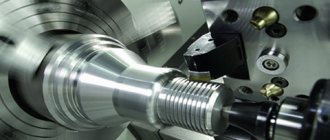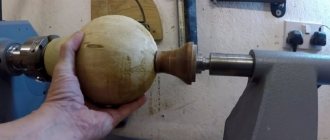Wet and dry wood
Wet wood usually processes better. The advantage is not only the simple and quick capture of material, but also the minimal dust formation during operation.
However, the resulting product will undergo major changes over time. Gradual drying can change the shape and size of the object. Rapid drying may even cause cracking.
Unlike fresh wood, when processing dry wood, you can count on stability of shape and final color. However, such turning work is more labor-intensive, but a number of modern devices solve this problem.
The lower availability and higher price of dried wood are also important.
Turning technology
Depending on the intention or the product to be produced, it is necessary to select a turning technique. The most common and simplest form is spindle turning, which is based on a cylindrical shape.
The firmly fixed material rotates smoothly around its axis, and special knives or planks shape the wood. In this way you make legs for chairs and tables, separate partitions for railings or fences.
Longitudinal or transverse turning will be used in the production of decorative elements or bowls, containers and toys. Here you can interestingly combine mechanical processing of the material from the outside with modification of the cavity inside the tree.
Other types of turning include, for example, annular, multi-axis or segment turning. However, for normal wood processing, knowledge of classical techniques and their combinations is sufficient.
- When working, pay attention to high-quality equipment. It’s definitely not worth saving on knives.
- High-quality, well-sharpened steel guarantees ease of use.
- The material under the blade will change smoothly and there will be no unevenness or unwanted edge abrasion.
- Choose knives, lathes, chisels only from high-quality manufacturers with the possibility of repeated grinding.
Quality knives are an investment, but it will come back to you soon. This will save your time, complex repairs of finished products and damaged material.
General information about metal turning
The metal processing procedure is carried out on special lathes using various cutting tools. The workpiece is installed in the spindle of the device , the operation of which begins after the electric motor is turned on.
The workpiece begins to rotate at high speed and a small layer of metal is removed from it over its entire surface with a cutter, drill or other cutting tool.
With the help of constant movement of the tool, the part is continuously cut to the required sizes and shapes. A more detailed process of turning a part can be seen in the video clip.
The machines allow efficient processing of various workpieces, resulting in a conical, threaded, cylindrical, shaped or other surface. With the help of turning work the following can be performed:
- rings;
- shafts;
- pulleys;
- couplings;
- gear rings;
- bushings;
- nuts
In addition, on a lathe you can:
- Make grooves.
- Cut off various parts of products.
- Process various holes using countersinking, reaming, drilling, boring.
- Cut the thread.
In the process of performing work, it is imperative to use various measuring instruments, which determine the sizes, shapes and layout options of the workpieces. In single and small-scale production, bore gauges, calipers, and micrometers are used for this purpose. Large enterprises use extreme calibers.
Advantages of metal turning
This process is considered a universal technology and is used for the manufacture of various products from alloys and metals. On a machine equipped with special-purpose cutters, even particularly hard materials can be processed.
Main advantages of the technology:
- High surface cleanliness of the resulting products.
- Processing precision.
- Possibility of producing a product with a complex configuration in one working cycle.
- The chips obtained after processing the part are melted and can be reused.
- When using special equipment, it is possible to produce large-sized parts.
In addition, with the help of turning equipment it is possible to organize mass production of products for various purposes.
Structure of a lathe
The universal center lathe is the most common lathe. The name of a lathe comes from two points between which the workpiece is clamped in the center.
The structural elements of a lathe can be divided into 5 main groups:
- Bed in the form of a massive cast base;
- Headstock and tailstock;
- Feeding device;
- Longitudinal or transverse support;
- Set of replacement gears;
- Transmission.
Some lathes are additionally equipped with an apron to drive the mechanisms.
Lathe bed
This is the main part of the lathe, it is shaped like a beam and is usually made of gray cast iron. The bed must be rigid and strong enough to support the weight of other parts of the lathe, not bend, and withstand the forces encountered during turning.
- The lathe bed is usually mounted on two frame legs.
- The left leg mainly hides the engine and gearbox, the right one serves as a toolbox.
- At the top of the bed there is a guide for the support and tailstock.
- The feeder slides on outer guide surfaces and the tailstock slides on inner guide surfaces.
Due to possible damage, tools and semi-finished products are not placed on it; storage compartments are provided for this purpose.
Lathe headstock
It is a hollow shaft mounted in bearings designed to prevent bending of the spindle and maintain the pressure generated during machining.
- The front and rear main bearings (sliding) perceive pressure perpendicular to the spindle axis.
- These pressures are also called radial pressures.
- The pressure in the direction of the spindle axis (axial pressure) is absorbed by the rolling bearing.
- The spindle and headstock should not vibrate during operation.
Most lathes have a box-shaped headstock (in exceptional cases they are cylindrical).
The right end of the spindle protrudes from the headstock and has a thread on the outer end to which a clamp is screwed for clamping the workpiece. The main part of the headstock is the spindle.
Spindle
The spindle is driven by a motor, which, as already mentioned, is installed in the left rack of the lathe. The motor shaft has a drive pulley with grooves for drive belts that transmit motion to the driven pulley and the gearbox.
- A gearbox has multiple gears, and the movement of the sliding gears changes the gears and therefore the speed of the drive pulley.
- The movement from the drive pulley is transmitted by a wide flat belt to a pulley in the headstock.
- The pulley is mounted on a housing mounted on two ball bearings.
The spindle passes freely through the housing and can be connected to it using a coupling or gear template.
Feeder
During turning, the knife is moved manually or mechanically, radially and axially relative to the workpiece. The feeder is driven by a shaft and replaceable gears. The movement is transmitted to gears in the feed reducer.
Shifting gears changes the speed at which the blade feeds when turning.
- In the feed mechanism, the gears are divided into three groups I, II, III. In Part I, the gears are changed by moving the sliding gears using a flywheel.
- Part II introduces the Norton gear, which is driven by an intermediate shaft on which is mounted a wide pinion, with which the pinion is constantly in mesh, mounted on a swing arm.
Wood turning is a beautiful and creative activity. It takes some skill, but with quality equipment and a powerful lathe, you can master the basic techniques relatively quickly.
In addition, treated wood is widely used. You can equip or complement it with conventional furniture production, it will also serve as a practical accessory in the interior and exterior.
Features of turning. Video examples
The essence of the metal processing process is as follows:
- machine movements are carried out in clear directions;
- the spindle of the device, together with the workpiece, rotates along the Z axis, which is the starting point in operation;
- the straight X axis must be strictly perpendicular to the Z axis;
- the cutters should be located in the XZ plane;
- The distance to the cutter must be adjusted when applying equipment.
In modern lathes there is a third coordinate, which is equal to the angle of the main spindle. This indicator can be set and adjusted using software.
Types of lathes
The most popular device for metal processing is the screw-cutting lathe, which is highly versatile. It is used in large enterprises, as well as in single and small-scale production.
In addition , there are other types of lathes:
- Screw-cutting lathes.
- Semi-automatic multi-cutting devices for serial and large-scale production.
- Turning-rotary two- or single-column.
- Turret lathes designed to work with complex products.
- Modern turning and milling complexes.
To produce parts with particularly precise diametrical and linear geometric parameters, programmable machines are used. In their design they are almost no different from universal ones.

